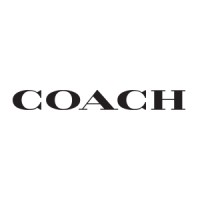
Coach
Coach was founded in 1941 as a family-run workshop. In a Manhattan loft, six artisans handcrafted a collection of leather goods using skills handed down from generation to generation. Discerning consumers soon began to seek out the quality and unique nature of Coach craftsmanship. Now greatly expanded, Coach is a modern American luxury brand with a rich heritage of craftsmanship and New York style. We continue to maintain the highest standards for materials and workmanship. Coach's exceptional workforce remains committed to carefully upholding the principles of quality and integrity that define the company. We attribute the prominence of the Coach brand to the unique combination of our original American attitude and design, our heritage of fine leather goods and custom fabrics, our superior product quality and durability, and our commitment to customer service.






